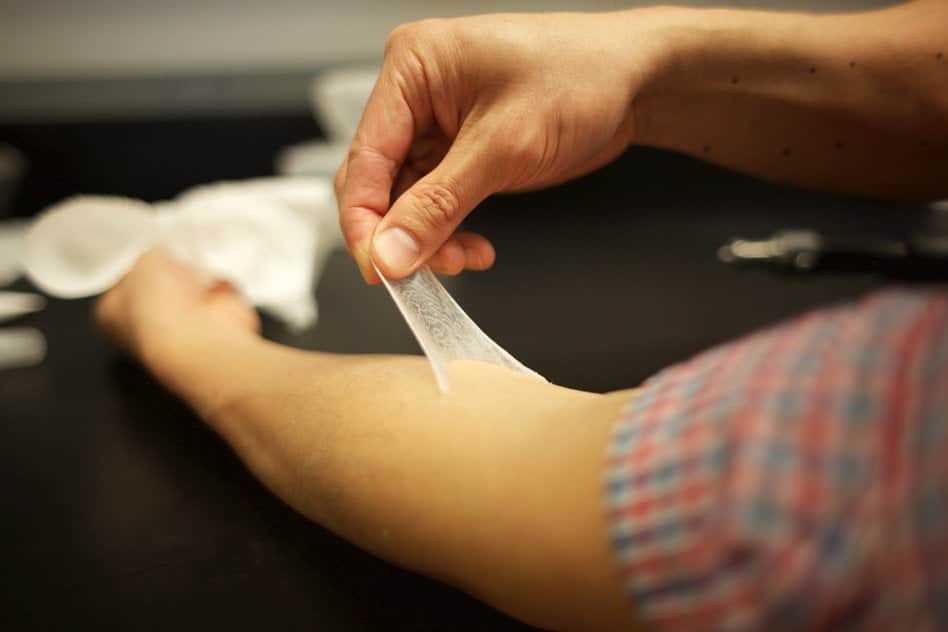A group of engineers from Edinburgh developed a synthetic leather: a fabric in which thickness and elasticity can be adapted according to the parts of the body.
The material can be absorbed by the skin tissue and assist it in the healing process of wounds and cuts.
Two synthetic materials are fused to produce nano-sized fibers (thousands of times thinner than a hair) that can be made in minutes.
Very thin fibers
The elaborate technology, known as electrospinning, includes a rotating cylinder that runs at high temperature and high voltage. The rotation produces the transformation of the solution containing the starting materials into very thin filaments. Almost like the principle that cotton candy draws from sugar, with the difference that when these fibers are cooled, synthetic leather is obtained.

Self-healing clothes
The "mixture" obtained can be used to produce clothes or fabrics of thickness and density that also vary from point to point, in a personalized way: the fabric incorporates a recently discovered material, polyglycerol sebacate, compatible with human tissues. This material can help the body produce new skin and repair wounds or cuts.
It is the first research of this type. The previousof MIT in Boston did not have the same characteristics.
medical Applications
Researchers are now focusing on future developments and medical tests for synthetic leather, estimated at around 4 years. The study has been published in the magazine Medical Engineering & Physics.
“Our technique shows a sustainable way of making artificial skin that can adapt to all areas of the body and accelerate healing processes,” says Dr. Norbert Radacsi, author of the study.

